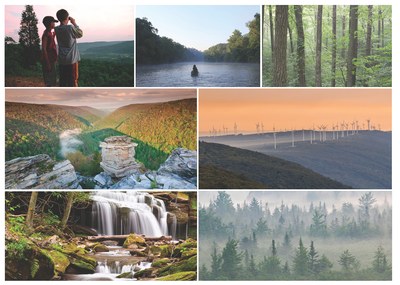Assessing Future Energy Development across the Appalachians
 The Appalachians are a landscape filled with globally-significant biological diversity and cultural resources that provides essential benefits to large cities and surrounding human communities. The region is also rich in energy resources that meet national and regional demands for energy. As wind, natural gas, and oil energy development expand along with traditional coal, there is an increasing need for research to inform discussions on how to meet immediate and future energy needs while sustaining the health of natural systems. To help address this need, the Appalachian LCC awarded a grant to The Nature Conservancy to assess current and future energy development across the entire region.
The Appalachians are a landscape filled with globally-significant biological diversity and cultural resources that provides essential benefits to large cities and surrounding human communities. The region is also rich in energy resources that meet national and regional demands for energy. As wind, natural gas, and oil energy development expand along with traditional coal, there is an increasing need for research to inform discussions on how to meet immediate and future energy needs while sustaining the health of natural systems. To help address this need, the Appalachian LCC awarded a grant to The Nature Conservancy to assess current and future energy development across the entire region.
Assessing Future Energy Development across the Appalachian LCC uses models that combine data on energy development trends and identifies where these may intersect with important natural resource and ecosystem services to give a more comprehensive picture of what potential energy development could look like in the Appalachians. A final report from the study outlines the major findings of the potential footprint from coal, wind, and natural gas development. A web-based mapping tool allows policy makers, land management agencies, industries, and others to see where development may likely occur and intersect with important natural values to inform regional landscape planning decisions. Ultimately this information is intended to support dialogue and conservation on how to effectively avoid, minimize, and offset impacts from energy development to important natural areas and the valuable services they provide.
View a video presentation by Thomas Minney, Director of The Nature Conservancy in West Virginia, which provides a detailed overview of Assessing Future Energy Development across the Appalachian LCC research, findings, and major products.






















